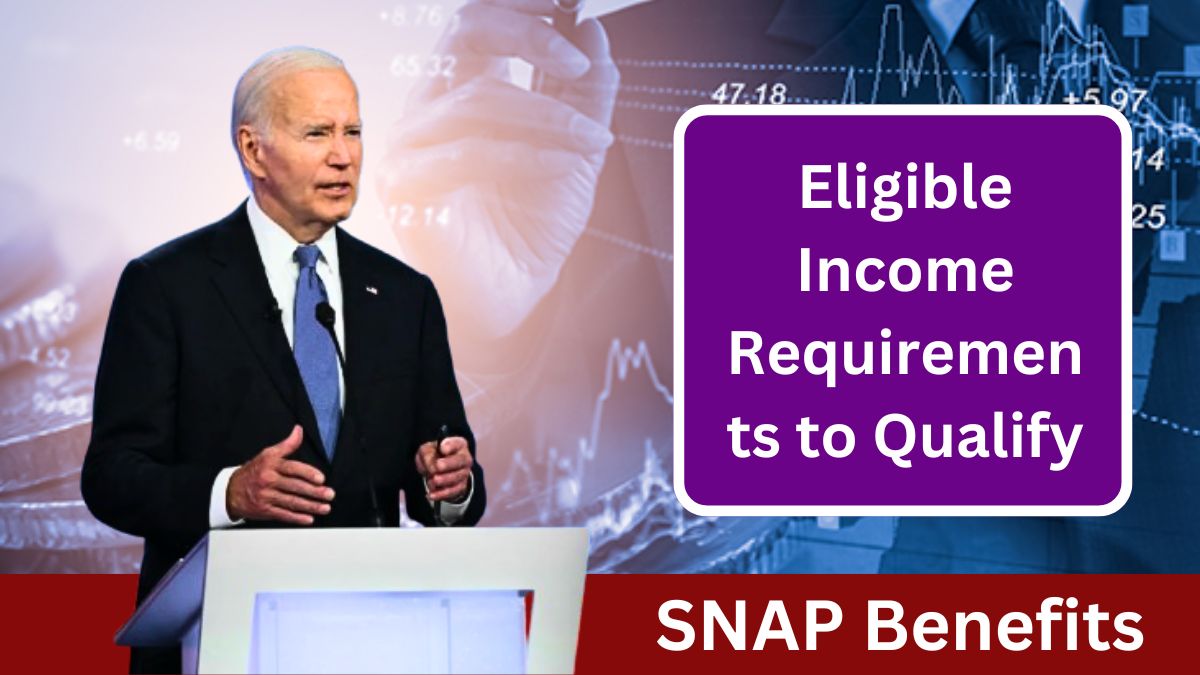The Supplemental Nutrition Assistance Program (SNAP) is a critical resource for many families across the United States, providing vital assistance to those struggling to meet their nutritional needs. With recent adjustments to income limits, SNAP has expanded its eligibility, making it accessible to more households. This article outlines the new income thresholds for SNAP eligibility, what items can be purchased with SNAP benefits, and how the program adapts to economic changes to support families in need.
Who Qualifies for SNAP?
To qualify for SNAP, households must meet specific income requirements, which vary based on the number of household members. Larger households have higher income limits to accommodate their greater needs. The program distinguishes between households with no earned income and those with earned income, providing different income thresholds for each category.
Income Guidelines
For households without elderly or disabled members and no earned income, the following income guidelines apply:
| Household Size | Monthly Income | Annual Income |
|---|---|---|
| 1 | $1,632 | $19,584 |
| 2 | $2,215 | $26,580 |
| 3 | $2,798 | $33,576 |
| 4 | $3,380 | $40,560 |
| 5 | $3,963 | $47,556 |
| 6 | $4,546 | $54,552 |
| 7 | $5,129 | $61,548 |
| 8 | $5,712 | $68,544 |
| Each additional member | +$583 | +$6,996 |
Income Guidelines
For households without elderly or disabled members but with earned income, the eligibility limits are slightly higher:
| Household Size | Monthly Income | Annual Income |
|---|---|---|
| 1 | $1,883 | $22,596 |
| 2 | $2,555 | $30,660 |
| 3 | $3,228 | $38,736 |
| 4 | $3,900 | $46,800 |
| 5 | $4,573 | $54,876 |
| 6 | $5,245 | $62,940 |
| 7 | $5,918 | $71,016 |
| 8 | $6,590 | $79,080 |
| Each additional member | +$673 | +$8,076 |
Households that fall within these income limits may qualify for SNAP, though additional factors like expenses and household composition can influence eligibility.
SNAP Benefits
SNAP benefits are designed to help households buy nutritious food items that support a balanced diet. Benefits are provided through an Electronic Benefits Transfer (EBT) card, which works like a debit card at approved grocery stores and markets. While SNAP covers a wide range of essential food items, there are restrictions on certain products.
Eligible Items
Households can use SNAP benefits to purchase the following food items:
- Bread and cereals
- Fruits and vegetables
- Meat, fish, and poultry
- Dairy products
These items cover the basics of a nutritious diet and are available at supermarkets, grocery stores, and selected farmers’ markets that accept SNAP.
Ineligible Items
Certain items cannot be purchased with SNAP benefits, as they do not align with the program’s mission to support healthy eating. Ineligible items include:
- Alcoholic beverages (beer, wine, liquor)
- Cigarettes and tobacco products
- Non-food items (pet food, cleaning supplies, soap, paper products)
- Vitamins and medicines
- Prepared foods meant for in-store consumption and hot foods
These exclusions ensure that SNAP benefits focus on nutritious food options for households.
Long-Term SNAP Planning
SNAP’s income limits and benefits undergo annual reviews to keep up with economic conditions, such as inflation. The recent adjustments in income thresholds, effective from October 2023, reflect rising costs and will remain in place until September of the following year. Afterward, these guidelines will be reassessed to continue meeting the needs of low-income families.
By adjusting these limits, SNAP ensures that it can respond to changing economic climates, providing continued support for households facing food insecurity. For those who qualify, SNAP can make a meaningful impact on daily life, helping recipients access healthier food options that may otherwise be out of reach.
For families struggling to afford food despite some income, SNAP offers a much-needed support system. If you believe your household qualifies, consider applying to gain access to this essential program, which can significantly improve both nutrition and well-being.
FAQs
Who is eligible for SNAP benefits?
Households meeting income limits and need requirements qualify.
Can SNAP benefits buy non-food items?
No, SNAP benefits cover food items only, excluding non-food products.
Are there different SNAP income limits for earned income?
Yes, income limits vary for households with earned vs. no income.
What items are eligible for purchase with SNAP?
SNAP covers items like fruits, vegetables, bread, and dairy products.
How often does SNAP adjust income limits?
SNAP income limits adjust annually based on economic conditions.











